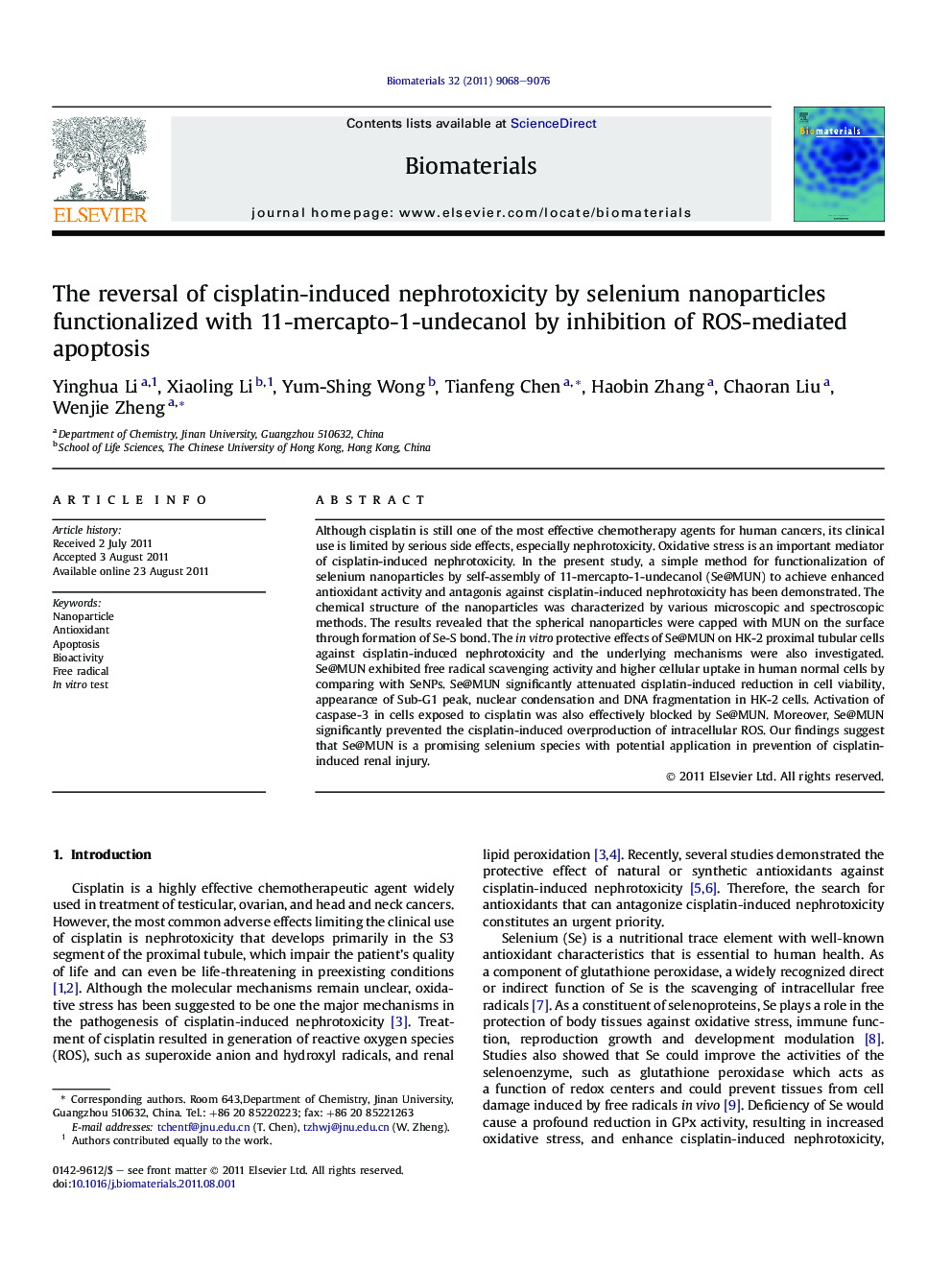| Article ID | Journal | Published Year | Pages | File Type |
|---|---|---|---|---|
| 7128 | Biomaterials | 2011 | 9 Pages |
Although cisplatin is still one of the most effective chemotherapy agents for human cancers, its clinical use is limited by serious side effects, especially nephrotoxicity. Oxidative stress is an important mediator of cisplatin-induced nephrotoxicity. In the present study, a simple method for functionalization of selenium nanoparticles by self-assembly of 11-mercapto-1-undecanol (Se@MUN) to achieve enhanced antioxidant activity and antagonis against cisplatin-induced nephrotoxicity has been demonstrated. The chemical structure of the nanoparticles was characterized by various microscopic and spectroscopic methods. The results revealed that the spherical nanoparticles were capped with MUN on the surface through formation of Se-S bond. The in vitro protective effects of Se@MUN on HK-2 proximal tubular cells against cisplatin-induced nephrotoxicity and the underlying mechanisms were also investigated. Se@MUN exhibited free radical scavenging activity and higher cellular uptake in human normal cells by comparing with SeNPs. Se@MUN significantly attenuated cisplatin-induced reduction in cell viability, appearance of Sub-G1 peak, nuclear condensation and DNA fragmentation in HK-2 cells. Activation of caspase-3 in cells exposed to cisplatin was also effectively blocked by Se@MUN. Moreover, Se@MUN significantly prevented the cisplatin-induced overproduction of intracellular ROS. Our findings suggest that Se@MUN is a promising selenium species with potential application in prevention of cisplatin-induced renal injury.
